Now Reading: Top 10 Best Places Visiting in Balaghat – Wildlife, Temples & Natural Wonders
-
01
Top 10 Best Places Visiting in Balaghat – Wildlife, Temples & Natural Wonders

Top 10 Best Places Visiting in Balaghat – Wildlife, Temples & Natural Wonders
1.Kanha National Park

Kanha Tiger Reserve, also known as Kanha National Park, is one of the Tiger Reserve of India and biggest national park of Madhya Pradesh, state situated in the heart of India. The contemporary Kanha territory is taken as two sanctuaries namely Hallon and Banjar stretching approximately 250 & 300 km2. Kanha National Park was constituted on June 1, 1955 and was made the Kanha Tiger Reserve in 1973. Now it sprawls over an area of 940 km2 in the two districts of Mandla and Balaghat.
It has an abundance of the Royal Bengal tiger, the Indian leopard, the sloth bear, the barasingha and the Indian wild dog. The forest described in the famous novel Rudyard Kipling, The Jungle Book is around jungles having this particular reserve. It is also the first tiger reserve in India to have a mascot, “Bhoorsingh the Barasingha” officially.
Kanha Tiger Reserve is inhabited by more than 1000 flowering species of plants.The forest-is a mixture of deciduous tropical forest covering 20%, deciduous(dry mixed deciduous forest) of 20% and dry mixed deciduous type mixed forest at 40% stretch and meadows dominated 25 %. The highland forests are the tropical moist, dry deciduous type and is different altogether from the bamboo of hills. Also to be seen is a Megastore survivng Indian ghost tree is in the dense fores
Kanha Tiger Reserve home to some of the tiger, leopards, wild dog, wild cat, fox, jackals species. Among the deer species, swamp deer or hard-ground barasingha is the ill.Notableofthe place as it is an only subspecies of swamp deer that is found in India, except for great swamp deer of Sundarbans. The animal is geared towards firm ground as in contrast to swamp deer living in marshy swamps of the North.
2.Gangulpara Dam and Waterfall
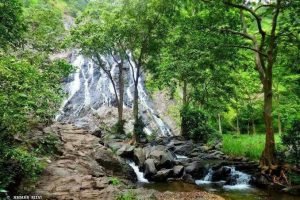
Gangulpara Tank and Waterfall is situated in the Balaghat district of central Indian state of Madhya Pradesh. It is at a distance of 14km at Balaghat. One can sight this water fall on Baihar Road. It is an amazing combination of god felt beauty and grandeur, delighting the eyes of spectator! The ideal picnic location for the locals as it is frequently visited by them for their weekend outings.
GANGULPARA ECO PRYATN
The nature enthusiasts purified this water body which also works as water storage for Ghysri Nala water. This water source serves to meet the irrigation of farmers of a nearby village, Tekadi.
Gangulpara Dam is bounded with plenty of hills and between this tank the dam looks like a natural water tank and can also see gangulpara dam when pass over 52 ghat which is bounded with this dam.in the monsoon session this place is very beautiful and shiny and natural little water falls falls is flown throughout.
3.Malanjkhand Copper Project
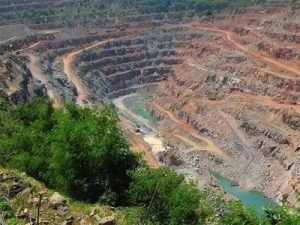
Granite rocks ranging from diorite to granite composition, form large body of copper ore in form of Malanjkhand Copper Belt. Important occurrence: Malanjkhand, Shitalpani (Balaghat, Madhya Pradesh), Gidhri Dhorli, Jatta and Garhi Dongri
Malajkhand Mines
Malanjkhand Copper Project was started during 1982. Geological Survey of India has conducted detailed geological exploration at this deposit in 1969. Mining lease of the ore was entrusted to HCL in 1973. With the passage of time this project was further strengthened through valid operational growth.
At present along with Open Pit Major Mine and Concentrator Plant the project has been equipped with auxiliary facilities like Tailings Disposal and Water Reclamation System, Let Others Shop, Maintenance Garage, Water Treatment Plant, Warehouses, Fuel Stations, 132 KV Power substation, Waste Management and Township with all modern facilities.
4.Bajarang Ghat

A Bajarang ghat, located along the picturesque shores of the Wainganga River and a serene getaway for anyone looking to step out of the concrete walls of the city sounds too good to be true. For swimmers who want depth , freedom and satisfaction of natural ambiance, for them this ghat is indeed a dream come true.
Unlike city swimming pools which are usually cramped and synthetic, Bajarang Ghat provides a vast stretch of river with a constantly deepening water level, so magnificently safe and easy-going swimming for a beginner but just as thrilling for anybody who enjoys to swim. The water is cold, crystal clean and refreshing – just right for a simply summer dip under open sky.
There are lots of ways to get to this serene river-based scenic spot with one of the most famous being passing through the Forest Rangers College, Balaghat. The trip itself is an eye treat, along side greenery and rural landscapes that make the path seem as if an adventure.
Why Bajarang Ghat Must Be Visited
- If you are a swimmer, a nature enthusiast or just someone who wants a peaceful retreat, Bajarang Ghat comes as your perfect destination. Its peaceful shores, peaceful vibe and welcoming tribe transform it beyond a swimming hole into an area of local fame to have fun.
5.Rajiv Sagar Dam
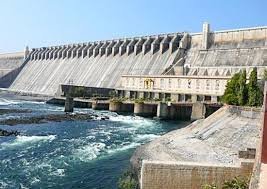
Rajiv Sagar Dam, additionally known as Bavanthadi Dam is an awe inspiring example of inter-state cooperation of MP & Maharasthra. Situated on the Baavanathadi River, this major irrigation project is likely to change the agricultural scenario of the area and provide a huge economic support to thousands of farmers.
Situated close to Baavanathdi village in Tahasil Tumsar of Bhandara district, Maharashtra, and also covering parts of Tehsil Katangi of Balaghat district, Madya Pradesh, the Rajiv Sagar Dam symbolises collaborative vision of development between two bordering states. Being situated in the boundary between MP and Maharashtra, it is effectively catering the needs of both regions.
The Rajiv Sagar Dam has the height of 31 meters and a length of 6.42 kilometers (6,420 meters) and it is a major large scale irrigation project in the central of India. This big structure has been desigened to contol the flow of the Baavanathadi Rerver, wchich sums up efficient water storage and distirbution in the field for Agriculrual Purpuse and household Purpuse,
6.Rampayli Templ

It is believed that Lord Rama, 14 years in exile, since then tethe name dacete Ram Pavdali, i.e., Ram Paiyali. According to the locals, the construction of Sri Ram temple was done 600 years ago by the Maratha Bhonsle in a scientific way as an fort on the river banks such a place has been made in the temple at which the first rays of the sun falls on the feet of Lord Ram Balaji. Construction of this temple is said in the ancient history of India.
The principal Siddha Murthy of shree Ram Mandir is Balaji & Sitaji. The idol of Lord Rama is shown in the forest like form. The left hand of Ram Dev is viewing the Virat monsters and offering blessings to the evil Sita on their head. Those devotees get the direct darshan of Sriram and Sita.
This Rama Vanvasi costume statue of Lord Rama received from the depth of Chandan river, after four hundred years ago when a person seen in dream The statue was removed and placed under the Neem tree on the river teak and King Bhosale renovated and built the temple and established idol.
7.Dhuty Dam
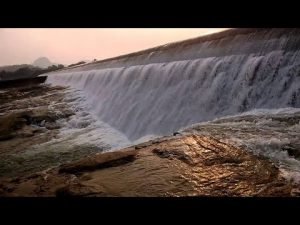
Situated close to quiet town, Lamta, in Balaghat district of Madhya Pradesh, there is a remarkable example of nineteenth-century engineering – the Dhuty Dam, refered to as the Dhuti Weir. Constructed over the river Wainganga, this historic dam is a symbol of the ingenious constructions achieved by the British-era still contributing as a part to the irrigation system of the region.
History
Built during 1923, the Dhuty Dam constructed under a very experienced civil engineer named Sir George Moss Harriot, he was a civil service worked in India during the colonial period. For a day and age when odor capital advanced construction trucks was not readily available it was not a simple job constructing a a deal of that stuff. Dam was an important part of the region’s agricultural growth, whereby water was diverted to irrigate the farmlands which over a period were solely dependent on monsoon rains.
8.Nahlesara Dam
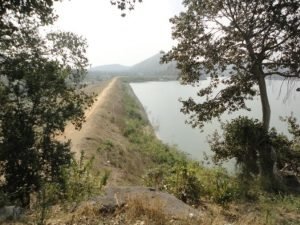
Nahlesara Dam stands exactly 58 km from Balaghat while being surrounded by nature’s embrace. This significant old structure still serves as a vital component for agricultural water supply to the nearby villages. The major construction of this dam across 2 kilometers of Chandan River took place from 1960 through 1965.
The construction of Nahlesara Dam occurred many years ago to serve agricultural land irrigation in nearby villages. The construction from 1960 to 1965 established this facility as a fundamental component for agricultural operations throughout the area. Construction for Nahlesara Dam spanned from 1960 to 1965 across the Chandan River leading to an interesting site which showcases local infrastructure development.
The tranquil atmosphere of Nahlesara Dam invites visitors seeking nature exploration in addition to its functional role. Nahlesara offers visitors ideal conditions to enjoy their day picnic as well as nature walks while providing peaceful surroundings away from urban areas. Nahlesara presents an attractive destination for photographers who aim to record beautiful vistas alongside quiet places for solitude seekers.
9.Lanji Fort
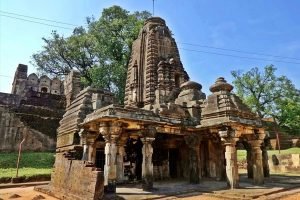
Since Great King Sangram Shah founded his 52 fortifications the ancient fortress of Lanji has been in existence.Presently the citadel retains the royal castle which Princess Haldas’s grandfather Malukuma established in the 12th century. Seven acres encompass the total area which was used for construction of the fort. The main entrance of the fort faces the center area symbolized by a tortoise statue displaying a snake emblem. The fortress is Chatusonian and reaches a height of 20 feet and accommodates four bourges at its corners with two of those bourges remaining intact. Paracotas features walls that extend 8 feet into width thus enabling passage between its Burj units.
Pakkota contains a deep hollow trench around its sides that once filled with water to fish large crocodiles which would swim and protect against enemy forces approaching the fort. Lanji Fort established itself as a powerful defensive stronghold because of its security features. The architectural style of Lanji fort employs identical building techniques used at Chandgarh fortress with Parakota and Burj walls decorated by Ficus religiosa and Banyan tree farmers growing them for 300 years. Through the main entrance one can see evidence of building activities which stood where the palace once stood on the left side. The bath located west of this structure has been covered by soil.
10.Maa Kaalipath Temple
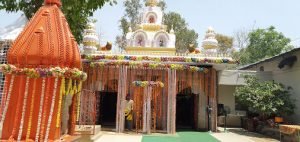
Maa Kaalipath Temple stands in Forest Colony within Balaghat district where visitors can see its lovely appearance. People in the area believe Mistress Mata pushed her prominent figure from beneath the earth which revealed only selective pieces before more of its structure began to appear above the surface. Local people believe that the statue emerges from underground each day due to which all parts of the idol now exist on the surface though nobody knows the actual state of the statue underground. This philosophy attracts numerous worshipers every year throughout the Navaratri festival. This site attracts thousands of visitors who reside both in Balaghat and its neighboring areas. People of Balaghat consider this place to be an authentic goddess location.
Related articles : Best Places to Visit in Ashoknagar – Temples, Forts & Cultural Heritage
Stay Informed With the Latest & Most Important News
Previous Post
Next Post
-
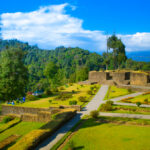 01Top 5 Best Places Visiting in Gyalshing – Monasteries, Lakes & Scenic Escapes
01Top 5 Best Places Visiting in Gyalshing – Monasteries, Lakes & Scenic Escapes -
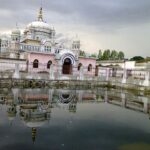 02Top 5 Best Places Visiting in Panna – Temples, Waterfalls & Wildlife Escapes
02Top 5 Best Places Visiting in Panna – Temples, Waterfalls & Wildlife Escapes -
 03Top 5 Best Places to Visit in Malerkotla – Malerkotla Fort, Sheesh Mahal & More
03Top 5 Best Places to Visit in Malerkotla – Malerkotla Fort, Sheesh Mahal & More -
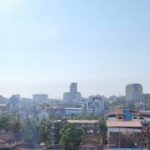 04Top 10 Best Places Visiting in Dakshina Kannad for Culture, Nature & Coastal Charm
04Top 10 Best Places Visiting in Dakshina Kannad for Culture, Nature & Coastal Charm -
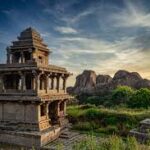 05Top 2 Best Places Visiting in Chitradurga for History, Nature & Adventure
05Top 2 Best Places Visiting in Chitradurga for History, Nature & Adventure -
 06Best Places Visiting in Shopian – Explore Top Attractions & Hidden Gems
06Best Places Visiting in Shopian – Explore Top Attractions & Hidden Gems -
 07Best Places Visiting in Narmadapuram – Temples, Waterfalls & Wildlife Escapes
07Best Places Visiting in Narmadapuram – Temples, Waterfalls & Wildlife Escapes














Pingback: Best Places Visiting in Barwani – Temples, Hills & Cultural Heritage